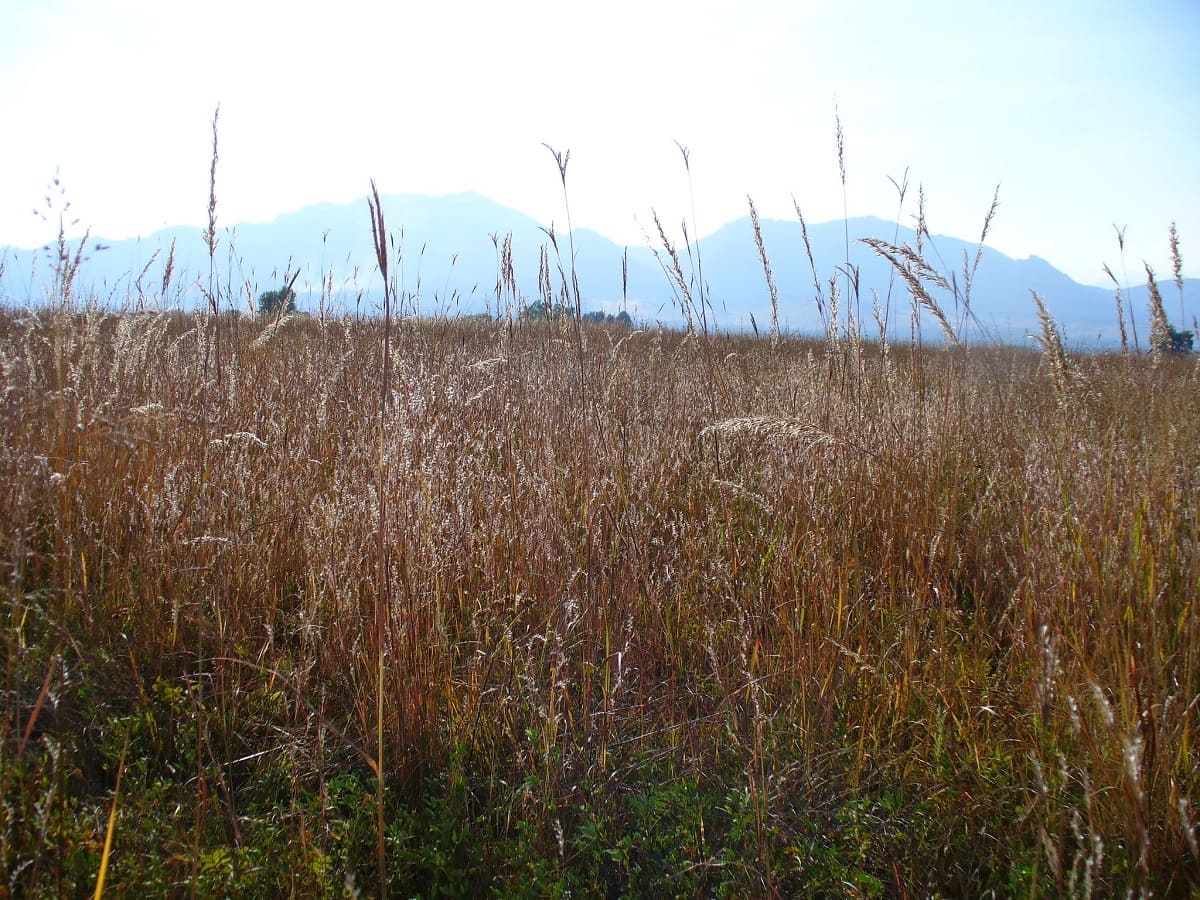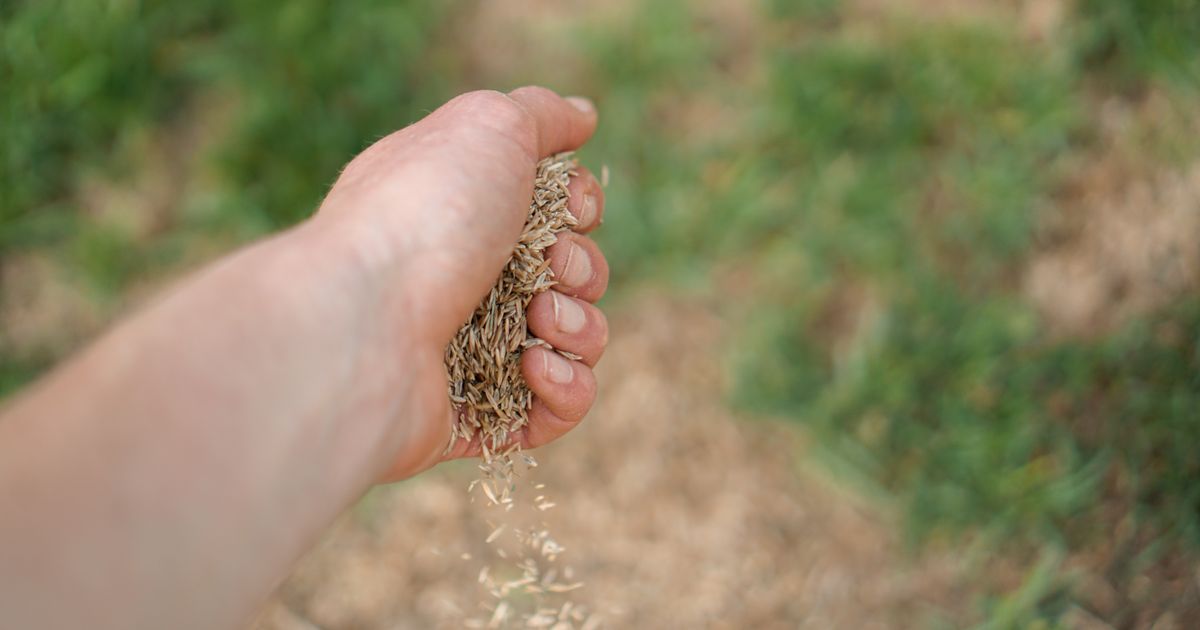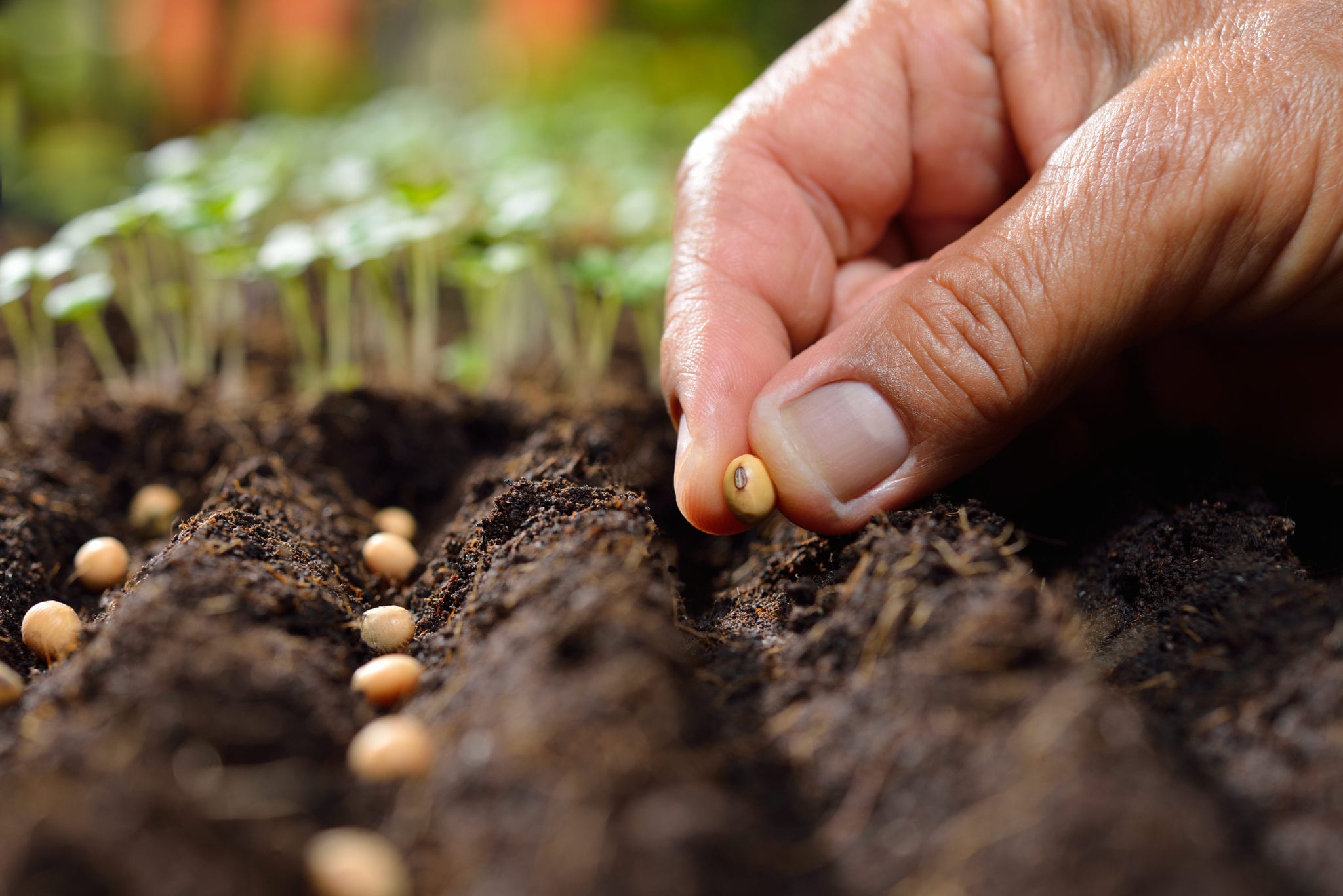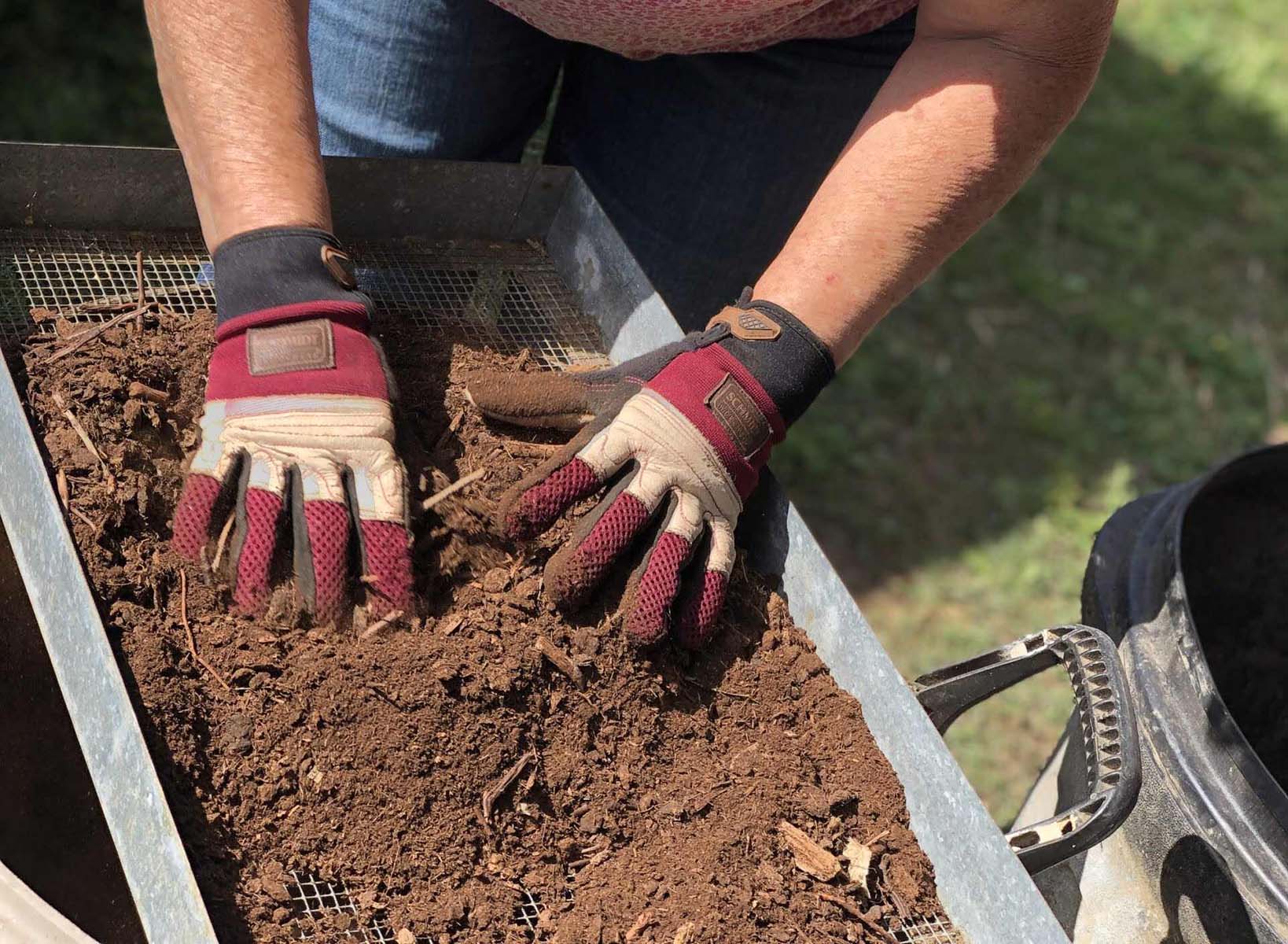Home>Garden Essentials>When To Plant Grass Seed In Colorado


Garden Essentials
When To Plant Grass Seed In Colorado
Modified: March 16, 2024
Find out the best time to plant grass seed in Colorado for a thriving garden. Explore our expert tips and recommendations to ensure successful gardening.
(Many of the links in this article redirect to a specific reviewed product. Your purchase of these products through affiliate links helps to generate commission for Storables.com, at no extra cost. Learn more)
Introduction
When it comes to creating a lush and vibrant lawn in Colorado, planting the right grass seed at the right time is essential. With its diverse climate and varying elevation levels, Colorado presents unique challenges for growing and maintaining a beautiful lawn. Whether you’re a seasoned gardener or a complete novice, understanding the factors that influence grass seed planting in Colorado is crucial for success.
Colorado’s climate is known for its drastic temperature fluctuations, extreme weather conditions, and varying levels of precipitation. These factors, coupled with the state’s high elevation, can pose challenges when it comes to selecting the best time to plant grass seed and determining the ideal grass species for your specific area.
In this article, we will explore the factors you need to consider when planting grass seed in Colorado, including the best time to plant, soil preparation, grass seed selection, planting techniques, watering and maintenance guidelines, and common mistakes to avoid. Armed with this knowledge, you’ll be well-equipped to create a thriving lawn that can withstand Colorado’s unique climate.
So, let’s dive in and discover how to successfully plant grass seed in the beautiful state of Colorado.
Key Takeaways:
- Plant cool-season grasses like Kentucky bluegrass and tall fescue in late summer or early fall for a lush lawn in Colorado’s diverse climate.
- Prepare soil, water gently, and avoid common mistakes like over-seeding to ensure successful grass seed planting and maintenance in Colorado.
Read more: When To Plant Grass In Colorado
Factors to Consider for Planting Grass Seed in Colorado
Before diving into the details of when and how to plant grass seed in Colorado, it’s important to understand the various factors that can impact the success of your lawn. By considering these factors, you can make informed decisions that will ensure the longevity and vitality of your grass.
1. Climate: Colorado’s climate is known for its significant variations across the state. The eastern plains experience a semi-arid climate, while the western slopes see more moisture due to higher elevation and proximity to the mountains. Consider the specific climate conditions in your area, including temperature ranges, average precipitation, and the occurrence of frost, as these factors will influence the grass species that thrive in your region.
2. Elevation: Colorado’s high elevation can affect the types of grasses that can grow successfully. As you gain elevation, the climate becomes cooler, and the growing season may be shorter. Take into account your specific elevation and choose grass species that are suitable for higher altitudes if necessary.
3. Soil Type: Soil composition varies greatly in Colorado, ranging from clay to sandy loam to rocky soils. Conduct a soil test to determine the pH level, nutrient content, and texture of your soil. This information will help you select the appropriate grass seed and identify any necessary soil amendments.
4. Sunlight and Shade: Evaluate the amount of sunlight and shade your lawn receives throughout the day. Some grass species thrive in full sun, while others are more shade-tolerant. Select grass varieties that match the light conditions in your yard.
5. Water Availability: Colorado is known for its limited water resources. Consider the availability of water for your lawn and choose grass species that are drought-tolerant or have low water requirements. This will not only conserve water but also ensure the sustainability of your lawn in times of water restrictions.
By taking these factors into account, you can narrow down your options and choose grass species that are well-suited to your specific location in Colorado. This will set the foundation for a healthy and resilient lawn that can withstand the challenges posed by the state’s unique climate.
Best Time to Plant Grass Seed in Colorado
Timing is crucial when it comes to planting grass seed in Colorado. The state’s climate and varying elevation levels play a significant role in determining the best time to establish a new lawn or overseed an existing one. By planting your grass seed at the optimal time, you give it the best chance to germinate, establish roots, and thrive in the challenging Colorado conditions.
In general, the best time to plant grass seed in Colorado is during the late summer or early fall. This timing allows the grass seed to take advantage of cooler temperatures while still benefiting from warm soil. The late summer and early fall months typically offer more consistent moisture levels and less extreme weather, creating ideal conditions for germination and root development.
It’s important to pay attention to the specific grass species you’re planting, as some varieties have different optimal planting times. Cool-season grasses, such as Kentucky bluegrass, perennial ryegrass, and tall fescue, thrive in Colorado’s climate and should be planted in the late summer or early fall. These grasses have the opportunity to establish strong root systems before going dormant during the winter months.
Warm-season grasses, such as Bermuda grass or zoysia grass, are not as well-suited to Colorado’s climate. They require hotter temperatures and longer growing seasons to thrive. If you choose to plant warm-season grasses, it’s best to do so in the late spring or early summer when the soil has warmed up sufficiently.
It’s worth noting that the optimal planting time may vary slightly depending on your specific location within Colorado. Higher elevation areas tend to have shorter growing seasons, so it may be necessary to adjust the planting time accordingly. Consult with local gardening experts or extension services to determine the best planting window for your particular region.
By selecting the appropriate time to plant your grass seed, you are setting the stage for successful germination and establishment. The late summer and early fall months provide the perfect conditions for cool-season grasses to take root and prepare for the following growing season, resulting in a lush and vibrant lawn in Colorado.
Preparing the Soil for Planting Grass Seed
Before sowing grass seed in Colorado, it is essential to properly prepare your soil. Adequate soil preparation ensures optimal seed-to-soil contact, provides a favorable environment for germination, and supports the growth and development of healthy grass plants. Here are the essential steps to follow when preparing your soil for planting grass seed:
1. Remove debris: Begin by clearing the area of any rocks, sticks, or other debris that may hinder the growth of grass seedlings. It is crucial to have a clean and smooth surface for even seed distribution and consistent growth.
2. Test the soil: Conducting a soil test helps determine the soil’s nutrient content, pH level, and organic matter. This information will guide you in making corrective measures and selecting appropriate amendments, such as lime to adjust pH or compost to improve soil structure and fertility.
3. Till the soil: Loosen compacted soil by tilling or aerating the area. This step helps improve soil drainage, root penetration, and nutrient uptake. Avoid over-tilling, as it can disrupt the soil structure and create a fine layer that hinders seed germination.
4. Level the surface: Use a rake or leveling tool to create a smooth and level surface. This ensures even water distribution and prevents pooling, which can drown the grass seeds or result in uneven growth.
5. Add organic matter: Incorporating organic matter, such as compost or well-rotted manure, into the soil improves its fertility and structure. Organic matter also helps retain moisture, enhances nutrient availability, and promotes beneficial soil microorganisms, all of which contribute to healthy grass growth.
6. Apply necessary soil amendments: Based on the results of your soil test, apply appropriate soil amendments to address nutrient deficiencies or imbalances. Follow the recommended rates and application methods to ensure proper integration into the soil.
7. Rake the soil surface: Lightly rake the soil surface to create small furrows or depressions. These little pockets provide a secure place for seeds to settle and establish contact with the soil, increasing the chances of successful germination.
8. Spread the grass seed: Using a broadcast spreader or by hand, distribute the grass seed evenly over the prepared soil surface. Follow the recommended seeding rates specific to the grass species you have chosen.
9. Cover the seeds: Gently rake or lightly drag a piece of drag mat or burlap over the seeded area to cover the seeds with a thin layer of soil. This method helps protect the seeds from being eaten by birds and provides them with some protection and moisture retention.
By diligently preparing your soil before planting grass seed, you create an optimal growing environment and set the stage for successful germination and establishment. The time and effort invested in soil preparation will yield healthy, resilient grass plants that can thrive in the diverse Colorado climate.
Selecting the Right Grass Seed for Colorado
Choosing the right grass seed for Colorado is crucial for establishing a healthy and vibrant lawn. With the state’s diverse climate, varying elevations, and unique soil conditions, selecting the appropriate grass species that can thrive in your specific area is key. Here are some factors to consider when choosing the right grass seed for Colorado:
1. Cool-Season Grasses: Cool-season grasses are the most suitable for Colorado’s climate. These grasses thrive in cooler temperatures and are more tolerant of the state’s variable weather conditions. Kentucky bluegrass, perennial ryegrass, and tall fescue are popular cool-season grasses well-suited to Colorado. They have the ability to withstand cold winters and hot summers, making them ideal choices for homeowners in the state.
2. Drought-Tolerant Varieties: Since Colorado is known for its limited water resources, selecting drought-tolerant grass varieties is important in maintaining a sustainable lawn. Fine fescues, such as creeping red fescue and hard fescue, have excellent drought tolerance and adaptability to different soil types. They require less water and have the ability to survive and maintain their green color in drier conditions.
3. Sun vs. Shade: Consider the amount of sunlight your lawn receives throughout the day. Some grass species thrive in full sun, while others are more shade-tolerant. Kentucky bluegrass, perennial ryegrass, and fine fescues are versatile options that can handle both sun and partial shade, making them suitable choices for Colorado yards with varying light conditions.
4. Disease and Pest Resistance: Colorado’s climate and geographic location can make lawns susceptible to certain diseases and pests. When selecting grass seed, choose varieties that have good resistance to common lawn diseases and pests prevalent in the area. This will reduce the need for chemical treatments and contribute to the overall health and longevity of your lawn.
5. Local Recommendations: Consult with local gardening experts, extension services, or nurseries for specific grass seed recommendations tailored to your specific area in Colorado. They have valuable knowledge and experience in selecting grass varieties that have performed well in local conditions.
It’s worth noting that a well-maintained lawn in Colorado often consists of a blend of grass species rather than just one type. This helps to ensure better resilience, as different varieties can thrive under diverse conditions. Additionally, consider purchasing high-quality certified grass seed from reputable sources to maximize its chances of success.
By carefully selecting the appropriate grass seed for Colorado’s unique conditions, you will establish a resilient and attractive lawn that can withstand the state’s challenging climate and provide you with years of enjoyment.
Plant grass seed in Colorado in the late spring or early fall for best results. This allows the seeds to establish before the heat of summer or the freezing temperatures of winter. Keep the soil consistently moist for successful germination.
Read more: When To Seed Lawn In Colorado
Steps for Planting Grass Seed in Colorado
Planting grass seed in Colorado requires careful attention to detail and proper execution to ensure successful establishment. By following these steps, you can maximize the chances of your grass seed germinating, rooting, and growing into a healthy and beautiful lawn:
1. Prepare the soil: Begin by preparing the soil as mentioned earlier. Remove debris, conduct a soil test, till the soil, level the surface, add organic matter, and apply necessary amendments. This sets the foundation for optimal seed-to-soil contact and provides a favorable growing environment.
2. Select the right grass seed: Choose the appropriate grass seed blend based on the specific conditions of your lawn, such as sun exposure, shade tolerance, and water availability. Be sure to select grass species recommended for Colorado’s climate.
3. Calculate the seeding rate: Determine the seeding rate based on the recommended amount of grass seed per square foot for the species you are planting. Divide the total lawn area by the seeding rate to calculate the amount of grass seed needed.
4. Prepare the seedbed: Before spreading the grass seed, lightly rake the soil surface to create small furrows or depressions. This helps create seed-to-soil contact and ensures even distribution.
5. Spread the grass seed: Use a broadcast spreader or spread the seed by hand, ensuring even coverage across the entire lawn area. Start by spreading half of the grass seed walking in one direction, then spread the remaining half walking in a perpendicular direction. This ensures consistent coverage.
6. Cover the seeds: Lightly rake or drag a piece of drag mat or burlap over the seeded area to cover the seeds with a thin layer of soil. This helps protect the seeds from birds, retains moisture, and provides some insulation for germination.
7. Water the seeded area: After planting the grass seed, water the area gently but thoroughly. The soil should be kept moist but not saturated during the germination and establishment period. Watering should be done regularly to support seed germination and early growth.
8. Follow a watering schedule: Once the grass seed has germinated, adjust the watering schedule to promote deep root growth. Water less frequently but with larger amounts to encourage the grass roots to penetrate deeper into the soil.
9. Maintain proper mowing and maintenance: When the grass reaches about 3 inches in height, mow it for the first time. Set the mower blade at a height that removes no more than one-third of the grass blade. Regularly mow the lawn, following proper heights and maintenance practices specific to the grass species you have planted.
10. Practice proper lawn care: Apply recommended fertilizers, control weed growth, and address any pest or disease issues as they arise. Follow a regular maintenance routine, including irrigation, aerating, and overseeding when necessary, to keep your lawn healthy and thriving.
By following these steps, you can establish a strong and resilient lawn from grass seed in Colorado. Remember, consistency and adherence to proper maintenance practices will result in a lush and vibrant landscape that enhances the beauty of your outdoor space.
Watering and Maintenance Guidelines for Newly Planted Grass Seed
Proper watering and maintenance are crucial for the success of newly planted grass seed in Colorado. Establishing a healthy root system and promoting growth during the critical early stages requires diligent attention. Here are some guidelines to follow to ensure optimal watering and maintenance for newly planted grass seed:
1. Watering:
- Water the newly seeded area immediately after planting to ensure proper seed-to-soil contact and initiate germination.
- Keep the soil consistently moist during the germination period, usually around 2-3 weeks. Water lightly and frequently to prevent the soil from drying out but avoid overwatering, which can lead to pooling or drowning the seeds.
- Use a sprinkler system or a gentle spray nozzle to provide an even and gentle distribution of water. Avoid using high-pressure sprayers that can dislodge the seeds or create washouts.
- Water in the early morning or late afternoon to reduce evaporation and give the grass blades time to dry before evening, minimizing the risk of disease.
2. Gradually taper watering frequency:
- As the grass seed begins to germinate and sprout, gradually reduce the frequency of watering while increasing the amount of water applied. This encourages the roots to grow deeper into the soil.
- Water deeply and infrequently to promote a healthy and drought-resistant root system. Aim for 1 inch of water per week, applied in one or two deep watering sessions.
- Monitor the soil moisture level by inserting a finger or a screwdriver into the ground. If it feels dry, it is time to water.
3. Mowing:
- Allow the newly planted grass seed to grow to a height of about 3-4 inches before mowing for the first time. This ensures that the roots are well-established.
- Set the mower at the highest setting to avoid cutting the grass too short, as this can stress the young plants and hinder growth.
- Never remove more than one-third of the grass blade in a single mowing. Regularly mow the lawn to maintain an appropriate height for the grass species you have planted.
4. Weed control:
- Keep a close eye on the newly seeded area and promptly address any weed growth. Weeds compete for nutrients, water, and light, which can hinder the growth of the grass seed.
- Avoid using herbicides until after the new grass has matured and established a strong root system. Consult with local gardening experts for safe and effective weed control methods for your specific grass species.
5. Fertilization:
- Avoid applying fertilizer immediately after seeding, as it can burn the young grass plants. Wait until the new grass has established and has been mowed a few times before applying any fertilizer.
- Follow recommended fertilization schedules and use appropriate products specific to your grass species. Over-fertilizing can lead to excessive leaf growth and weaken the young plants.
By following these watering and maintenance guidelines, you can ensure the successful establishment and growth of newly planted grass seed in Colorado. Consistency, attentive care, and patience are key to cultivating a healthy and lush lawn that will be the envy of your neighborhood.
Common Mistakes to Avoid When Planting Grass Seed in Colorado
When it comes to planting grass seed in Colorado, avoiding common mistakes can make a significant difference in the success and longevity of your lawn. By being aware of these pitfalls and taking necessary precautions, you can ensure optimal grass seed germination and establishment. Here are some common mistakes to avoid when planting grass seed in Colorado:
1. Planting the wrong grass species: Choosing the wrong grass species that is not well-suited to Colorado’s climate, soil conditions, or light exposure can lead to poor growth and an unsightly lawn. Research and select grass varieties recommended for your specific area in Colorado to ensure better adaptation and resilience.
2. Ignoring soil preparation: Neglecting proper soil preparation before planting grass seed can hinder seed-to-soil contact, nutrient availability, and water retention. Take the time to clear debris, conduct a soil test, and amend the soil as needed to create an optimal growing environment for your grass seed.
3. Incorrect seeding rate: Over or under-seeding your lawn can result in uneven growth and an unhealthy appearance. Follow the recommended seeding rate specific to the grass species you are planting to achieve an even coverage and maximize the seed’s potential for germination and establishment.
4. Inadequate watering: Watering is critical during the germination and establishment phase. Insufficient watering can lead to poor germination, while over-watering can cause seed washout or promote fungal diseases. Follow proper watering guidelines, ensuring consistent and adequate moisture while avoiding excessive saturation.
5. Neglecting proper mowing practices: Mowing too soon or too short after germination can stress the young grass plants and inhibit proper growth. Allow the grass seedlings to reach a height of 3-4 inches before the first mow, and never remove more than one-third of the grass blade in a single mowing.
6. Lack of weed control: Failing to address weed growth can negatively impact the growth and health of your grass seed. Weeds compete for resources and may overshadow or suffocate the young grass plants. Regularly monitor the area for weeds and promptly remove them before they become a significant problem.
7. Improper fertilization: Applying fertilizer too soon or using the wrong type or amount can harm the young grass seedlings. Wait until the grass has established a strong root system and has been mowed a few times before applying any fertilizer. Follow recommended fertilization schedules and use products appropriate for your specific grass species.
8. Lack of proper maintenance: A lack of regular maintenance, including proper watering, mowing, and pest control, can undermine the health and vigor of your lawn. Follow a consistent maintenance routine to promote the long-term vitality of your grass and address any issues that arise promptly.
By avoiding these common mistakes, you can set yourself up for success when planting grass seed in Colorado. Proper preparation, attentive care, and adherence to recommended practices will result in a beautiful and resilient lawn that thrives in the unique climate and conditions of Colorado.
Conclusion
Planting grass seed in Colorado requires careful consideration of the state’s diverse climate, elevation levels, and soil conditions. By understanding the factors that influence grass seed planting, such as the best planting time, soil preparation, grass seed selection, and proper maintenance, you can ensure the success of your lawn in this scenic state.
Colorado’s variable climate calls for cool-season grasses like Kentucky bluegrass, perennial ryegrass, and tall fescue, which can withstand both cold winters and hot summers. Drought-tolerant varieties and proper irrigation practices can help conserve water while maintaining a green and healthy lawn.
Soil preparation is crucial, including clearing debris, conducting a soil test, tilling, and incorporating organic matter. These steps promote optimal seed-to-soil contact and provide a fertile environment for grass seed germination and growth.
Proper watering is essential during the germination and establishment period. Gradually tapering watering frequency and following a regular watering schedule contribute to deep root growth and overall lawn health.
Additionally, avoiding common mistakes like planting the wrong grass species, neglecting soil preparation, over or under-seeding, inadequate watering, improper mowing, ignoring weed control, incorrect fertilization, and lack of maintenance will help you establish a lush and thriving lawn.
In conclusion, carefully planning and executing the planting of grass seed in Colorado can result in a beautiful, resilient, and sustainable lawn. By considering the state’s climate, elevation, soil conditions, and following proper techniques for seeding, watering, and maintenance, you can create an outdoor space that enhances the beauty of your home and provides a welcoming environment to enjoy with family and friends.
Frequently Asked Questions about When To Plant Grass Seed In Colorado
Was this page helpful?
At Storables.com, we guarantee accurate and reliable information. Our content, validated by Expert Board Contributors, is crafted following stringent Editorial Policies. We're committed to providing you with well-researched, expert-backed insights for all your informational needs.















0 thoughts on “When To Plant Grass Seed In Colorado”